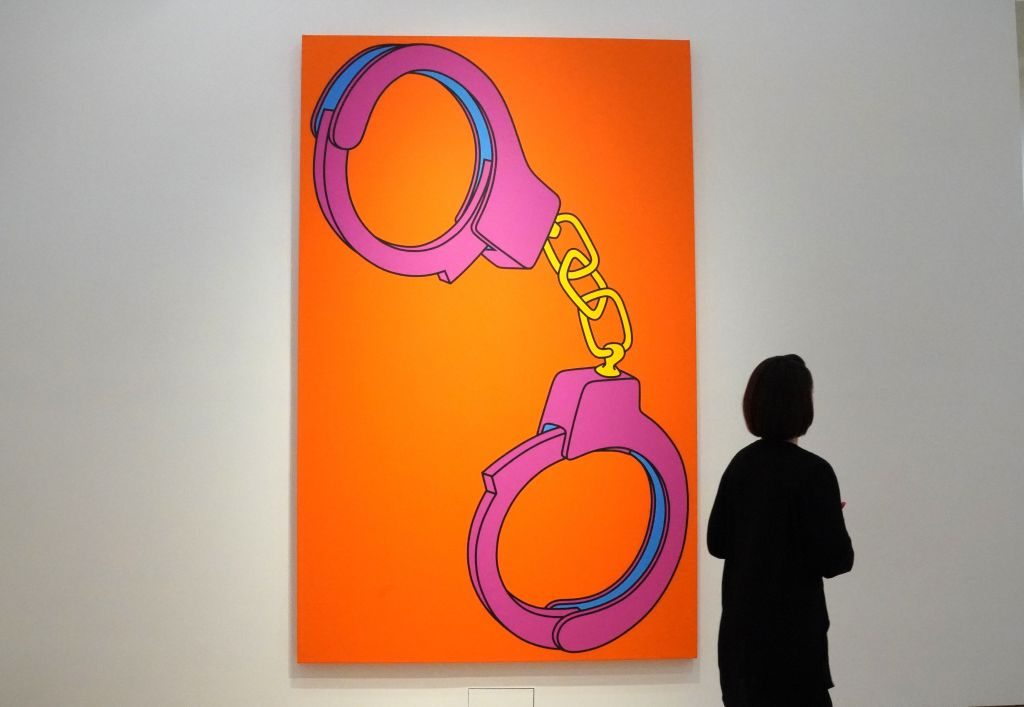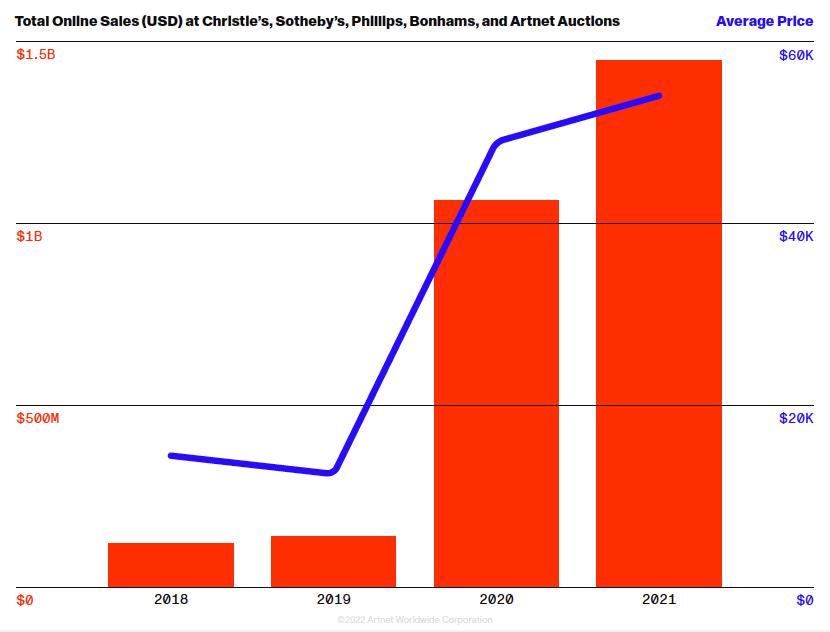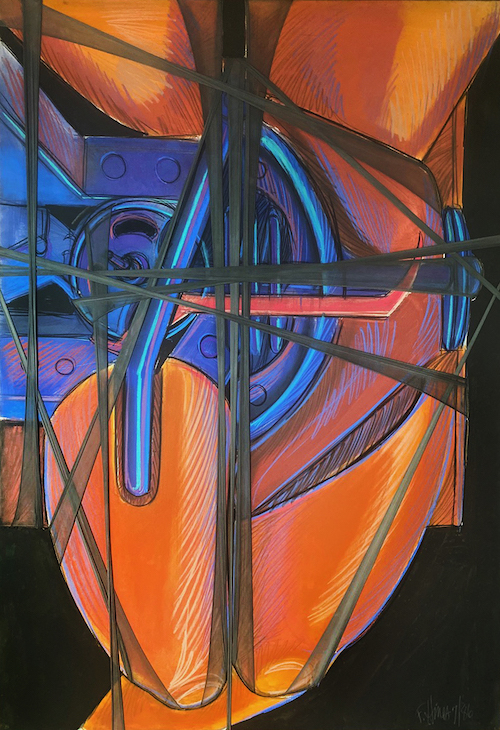The Back Room
The Back Room: Auctioneers Unleashed
This week: deregulating NYC's auctions, an online sales surge, dumpster-diving for greatness, and much more.

This week: deregulating NYC's auctions, an online sales surge, dumpster-diving for greatness, and much more.

Tim Schneider

Every Friday, Artnet News Pro members get exclusive access to the Back Room, our lively recap funneling only the week’s must-know intel into a nimble read you’ll actually enjoy.
This week in the Back Room: deregulating NYC’s auctions, an online sales surge, dumpster-diving for greatness, and much more—all in a 6-minute read (1,656 words).
__________________________________________________________________________

Michael Craig-Martin, Handcuffs on view at Christie’s New York in 2019. Photo by Timothy A. Clary/AFP via Getty Images.
On Tuesday, we learned that New York City has quietly killed a set of regulations developed over the past three decades to promote transparency and fairness in the auction sector. The move presents major new uncertainties in a trade already infamous for its secretive, freewheeling nature.
City Council members ratified the rollback last summer. While it will not technically be complete until June 15, almost all of the most consequential guardrails already disappeared last month.
According to the New York Times, which broke the story, the deregulation is part of a broader effort to aid a variety of industries still trying to rebound from the pandemic, such as laundries, sidewalk cafes, and arcades.
But unlike these other businesses, New York auction houses can pull in billions of dollars in revenue annually. That’s a dramatic upgrade from the 1980s, when the city began regulating the sector following multiple lawsuits alleging that auctioneers had acted against sellers’ interests.
Why do this now? “Representatives for the city told the New York Times it had received very few complaints about the auction industry in recent years, and that they believe broader consumer protection laws will suffice to keep bad actors in line,” Eileen Kinsella wrote.
That could prove true. But to understand the stakes, let’s look at the most important regulations voted out of existence.
What Changed?
Each of the deregulations below already came into effect on April 10, with one noted exception…
Chandelier Bidding No Longer Capped: Rules used to hold that auctioneers could only call out imaginary bids to spur demand up to a lot’s reserve price. That prohibition is now gone, theoretically permitting auctioneers to try upping the value of their commission by countering actual bids with fake ones even above the price at which a lot would sell.
How Is the Industry Reacting?
Eileen wrote that responses from several advisors, art-law attorneys, and other experts outside the auction houses “ran the gamut from the equivalent of a verbal shrug to serious concern about whether a lack of transparency could damage client confidence and harm the market.”
One specific red flag: Most global auction hubs (including London and Hong Kong) followed New York’s trade-specific regulations in the absence of local counterparts. The worst-case scenario, then, would be that Gotham’s rollback leads to an international backslide in best practices under the hammer.
However, reps from Christie’s, Sotheby’s, and Phillips each released statements essentially pledging to continue upholding the same high standards of ethics, fairness, transparency, and client service as they had before NYC’s regulatory sunset. Will lower-level houses follow their lead?
__________________________________________________________________________
Don’t expect much to change at next week’s major spring auctions. The symbol-packed catalogs have already been published (even if just online), and procedural minutiae will be under maximum scrutiny because of the recent media coverage around the sector’s deregulation.
The long-term picture is murkier. Even if scores of bad actors strike immediately, it could take years to reimpose rules due to New York’s pandemic-backlogged court system and slowfooted municipal bureaucracy. (Remember, it took almost a year after last summer’s vote to actually strip away these regulations.)
So let’s hope the city council’s bet pays off for everyone involved in the global art trade. If not, at least there may be job openings for us in a bunch of freshly founded NYC laundromats.
____________________________________________________________________________
Your trusty Wet Paint scribe is taking a break this week. Here’s what else made a mark around the industry since last Friday morning…
Art Fairs
Auction Houses
Galleries
Institutions
NFTs and More
____________________________________________________________________________

© 2022 Artnet Worldwide Corporation.
The onset of the pandemic forced technophobic auction houses to drag their operations into the 21st century, and the system upgrade may have forever changed the game for online-only sales.
To find out how much art sold across all auction types in 2021, which countries bounced back fastest from the pandemic, and more, click through to download the Spring 2022 Artnet Intelligence Report.
____________________________________________________________________________
“They were saying it will probably be on the wall of a hedge fund guy or in the desert in Arabia. I remember being offended that speculation centered on men, and nobody thought that a woman would either have the money or the balls.”
—Elaine Wynn on the narrow-minded market watchers who failed to consider that she could be the buyer of a $142.4 million triptych by Francis Bacon in 2013. (WSJ Magazine)
____________________________________________________________________________

Francis Hines, Untitled, from the Mutagenesis Series (No. 805) (1986). Courtesy of Hollis Taggart.
____________________________________________________________________________
Price: $35,000
Selling in: “Francis Hines: Unwrapping the Mystery of New York’s Wrapper”
Closing date: June 11
In the 1970s, U.S. artist Francis Mattson Hines was known for fabric-wrapping several New York City structures (a là Christo and Jeanne-Claude), including the Washington Square Arch in 1980. But his work as a sculptor, painter, and illustrator never caught on in the art market, and he eventually retreated to Connecticut, where he died in obscurity in 2016.
A year later, a local mechanic named Jared Whipple found hundreds of Hines’s artworks in a dumpster used to clear an abandoned barn that likely served as the late artist’s studio. Whipple and a friend hauled dozens of the works back to his warehouse for further inspection, sparking five years of research that transformed Whipple into a de facto scholar of the long-forgotten Abstract Expressionist.
Now, with the blessing of Hines’s family, 31 of the recovered works are on exhibition—and selling fast. Dealer Hollis Taggart opened a solo show at his Southport, Connecticut space last night, as well as a small “focused presentation” in his Chelsea headquarters.
By press time, 23 of the 30 paintings on fabric-wrapped panels had already sold, for prices between $12,500 and $35,000 each. That leaves only seven paintings (including the one featured here) and one sculpture (priced at $55,000) up for grabs. So if you think Hines could be the next great rediscovered genius, you still have a chance to get in early… but you’ve also got competition.
____________________________________________________________________________